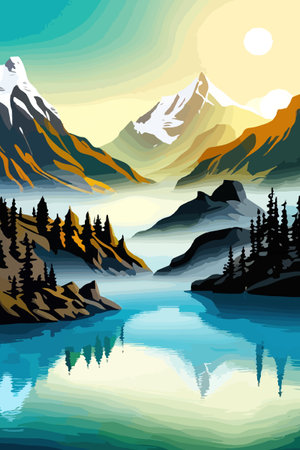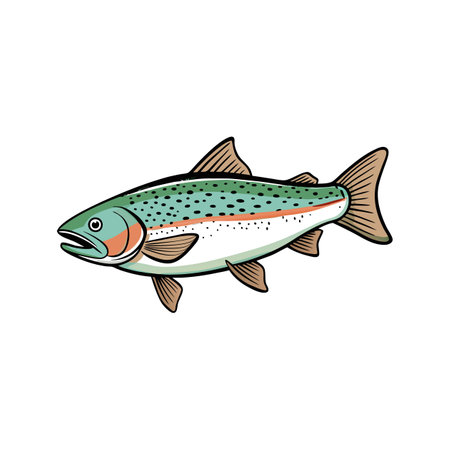Introduction to Wilderness Fishing Camps
When you think of truly getting away from it all, few places in North America offer the sense of freedom and adventure found in the remote wilderness fishing camps of Canada. These camps, often accessible only by floatplane or long boat rides, are scattered across the vast northern forests and pristine lakes of provinces like Ontario, Manitoba, Saskatchewan, and British Columbia. For many Americans seeking a break from city life or suburban routines, these camps represent more than just a vacation—they’re a chance to reconnect with nature, test their survival skills, and experience a way of living that’s become rare in our modern world. The appeal lies not only in the promise of world-class fishing for species like walleye, northern pike, and lake trout but also in the opportunity to live off the land, cook over open fires, and unplug from technology. Whether it’s a guided lodge with rustic cabins or an ultra-remote tent camp, these experiences attract adventurers searching for solitude, camaraderie around the campfire, and memories that last a lifetime.
2. Setting Up Camp in the Canadian Wild
Establishing a wilderness fishing camp in remote Canada is both an adventure and a test of self-sufficiency. Far from paved roads and grocery stores, every piece of gear and ounce of know-how becomes critical. The first step in setting up camp is choosing a site that offers proximity to water for fishing and drinking, flat ground for sleeping, and natural windbreaks for protection against the elements.
Essential Equipment Checklist
| Category | Must-Have Items |
|---|---|
| Shelter | Heavy-duty tent, ground tarp, sleeping bag rated for low temps, repair kit |
| Cooking | Portable stove, fuel, fire starter, cookware, utensils, bear-proof food containers |
| Fishing Gear | Rods, reels, tackle box (lures, lines, hooks), bait, fish cleaning tools |
| Safety & Navigation | Satellite phone or emergency beacon, compass/GPS, maps, first aid kit |
| Clothing | Layered clothing (thermal base, waterproof outer), boots, hats, gloves |
| Miscellaneous | Water filtration system, insect repellent, headlamp/flashlight with extra batteries |
The Logistics of Remote Living
Once on-site—often reached by bush plane or boat—every camper must pitch in to get the basecamp functional. Tasks are divided: some gather firewood while others set up tents and secure food supplies away from wildlife. Water must be filtered or boiled before use. Cooking over an open fire or portable stove requires skill and patience. All trash is packed out to maintain the pristine environment.
Key Skills Needed for Wilderness Survival:
- Efficient camp setup and breakdown
- Fire building under wet conditions
- Knot tying for shelter and gear security
- Basic wilderness first aid response
- Map reading and navigation without cell service
- Sustainable fishing and foraging techniques
Cultural Note: American Know-How Meets Canadian Wilderness
Americans venturing north quickly learn that success comes down to preparation and adaptability. Forgetting duct tape or a spare rod tip can mean the difference between comfort and discomfort—or even safety and risk. Embracing Canadian wilderness traditions like respecting wildlife corridors and practicing Leave No Trace principles is key for a true off-the-grid experience.

3. Life Off the Grid
Living off the grid in a remote Canadian fishing camp is a far cry from everyday suburban life in the U.S. Out here, daily routines revolve around nature and self-reliance rather than convenience and technology. For most, this means adapting to a world where cell service is nonexistent, power comes from generators or solar panels, and everything you need must be sourced from the wild or brought in by floatplane. Cooking takes on an old-school flavor—literally. Meals are often prepared over open fires using fresh-caught fish, wild berries, and whatever non-perishable supplies you’ve packed in. There’s something special about frying up walleye in a cast iron skillet right beside the lake where it was caught, with nothing but the sounds of loons and crackling wood for company. Water isn’t something you just grab from the tap; it needs to be collected from lakes or streams and purified, whether by boiling, filtration pumps, or chemical tablets. This extra step becomes second nature quickly—it’s just part of staying healthy out here. Navigation also shifts back to basics: GPS devices can help if you have battery power, but old-fashioned maps, compasses, and keen observation are key tools for getting around safely. Without Google Maps to lean on, people become more attuned to landmarks like distinctive trees or rock formations. The pace of life slows down considerably, replaced by an honest sense of accomplishment that comes with meeting your own needs day after day. It’s challenging, sure—but that’s exactly what makes life off the grid in these wilderness fishing camps so rewarding.
4. Fishing the Remote Waters
One of the most exciting aspects of living in a wilderness fishing camp is exploring the untouched lakes and rivers that stretch across remote Canada. These pristine waters are home to an incredible variety of fish, many of which are sought after by both novice and seasoned anglers. Some of the most common catches include northern pike, walleye, lake trout, brook trout, and smallmouth bass. Each species presents its own unique challenge and flavor, making every fishing trip an adventure.
| Fish Species | Where Found | Best Technique |
|---|---|---|
| Northern Pike | Shallow weedy bays | Spinnerbaits & topwater lures |
| Walleye | Deep rocky points & drop-offs | Jigging with live bait or soft plastics |
| Lake Trout | Cold deep lakes | Trolling spoons or deep-diving crankbaits |
| Brook Trout | Clear streams & smaller lakes | Fly fishing with nymphs or small spinners |
| Smallmouth Bass | Rocky shores & submerged logs | Casting crankbaits & soft plastics |
The techniques used to land these fish vary depending on the location and time of year, but resourcefulness is key. Many campers rely on classic methods like casting from shorelines at dawn or trolling from a canoe under the midday sun. The thrill of feeling that first tug on your line—knowing you might be reeling in tonight’s dinner—is hard to beat. There’s something deeply satisfying about catching your own meal in such a wild setting, whether you’re filleting a walleye for shore lunch or grilling up fresh lake trout over an open fire. It’s a true taste of living off the land.
5. Wildlife Encounters and Natural Hazards
Living in a remote Canadian fishing camp means sharing your space with some of North America’s most iconic—and sometimes intimidating—wildlife.
Bears: The Ultimate Camp Neighbors
It’s not uncommon to spot black bears, and occasionally grizzlies, roaming near campsites in search of food. One evening, I watched a bear amble through our camp, sniffing the air for leftovers. It was a reminder to always keep food secured and to use bear-proof containers. A good rule of thumb: never leave fish guts or snacks lying around. Making noise when hiking and keeping a can of bear spray handy are also non-negotiables.
Moose: Majestic Yet Unpredictable
Moose might look slow and gentle, but these giants can become aggressive if startled or during mating season. I learned quickly to give them plenty of space—especially mothers with calves. Spotting a moose at dawn by the water’s edge is a breathtaking experience, but always watch from afar and avoid getting between a moose and her young.
Bugs: The True Wilderness Challenge
If you think you’ve experienced mosquitoes before, wait until you visit northern Canada in June. Black flies and mosquitoes come out in clouds, making bug nets, long sleeves, and strong repellent absolute essentials for survival. Pro tip: Treat clothing with permethrin before arrival to add an extra layer of defense.
Unpredictable Weather: Be Prepared for Anything
The weather in remote Canadian wilderness is famously fickle—sunny mornings can turn into cold rainstorms by afternoon. Always dress in layers, pack waterproof gear, and never underestimate how quickly conditions can change. Lightning storms can roll over lakes without warning, so it’s important to have an evacuation plan and know where the nearest shelter is located.
Survival Wisdom
Respect for wildlife and nature isn’t just about safety—it’s about embracing the wild spirit of Canada’s north. By staying alert and prepared, you’ll collect stories of close calls with bears or sudden snow squalls that will last a lifetime—and maybe even earn you some bragging rights back home.
6. Building Community and Camaraderie
One of the most profound aspects of life at a wilderness fishing camp in remote Canada is the sense of community that naturally develops among campers. Despite the vast, untamed environment and miles of separation from modern civilization, people find ways to connect and support one another. In these isolated settings, sharing resources becomes second nature—whether it’s splitting a fresh catch, exchanging tips on the best fishing spots, or lending out an extra layer during a cold snap.
Sharing Skills and Stories
Campers come from all walks of life, bringing unique skills and experiences to the table. Around nightly campfires, they trade stories about their adventures, mishaps, and close encounters with wildlife. These shared moments create lasting memories and foster trust. Whether you’re new to wilderness living or a seasoned outdoors enthusiast, there’s always something to learn from others in the group.
Teamwork in Daily Life
Surviving—and thriving—in the Canadian wild requires teamwork. Tasks like gathering firewood, preparing meals, maintaining shelters, or hauling gear across rough terrain often become group efforts. These collective challenges help break down barriers quickly; everyone pitches in not just out of necessity, but because a strong sense of camaraderie emerges when facing nature’s obstacles together.
Creating Lasting Bonds
The connections formed at these camps often extend well beyond the trip itself. Many campers stay in touch after returning home, planning future expeditions or simply keeping up with each other’s lives. The isolation of the wilderness strips away distractions and encourages genuine relationships built on shared effort and mutual respect—a rare gift in today’s fast-paced world.
7. Reflections: Lessons from Living Off the Land
Spending time at a wilderness fishing camp in remote Canada isn’t just about catching fish or enjoying breathtaking landscapes—it’s a transformative journey with lifelong takeaways. The experience demands self-reliance, as you learn to depend on your own skills for food, shelter, and survival. Simple tasks like building a fire in damp weather or cooking freshly caught fish over an open flame become meaningful accomplishments, instilling confidence and resourcefulness that extend well beyond camp life. Conservation quickly becomes second nature. When you’re surrounded by pristine lakes and forests, you see firsthand how delicate these ecosystems are. Practices like catch-and-release fishing, minimizing waste, and respecting wildlife aren’t just rules—they’re necessities for keeping this wilderness wild for future generations. It’s a mindset that follows you home, influencing how you treat the environment every day. Perhaps most importantly, living off the land fosters a deeper appreciation for nature’s rhythms and challenges. Far from city noise and screens, the solitude allows for introspection and mindfulness. Watching the sunrise over misty waters or listening to loons call at dusk gives you a new sense of gratitude for the simple beauty around us. Ultimately, life at a Canadian wilderness fishing camp teaches lessons that linger long after the trip ends: a renewed respect for nature, an understanding of our impact on the environment, and a reminder of our own resilience.


